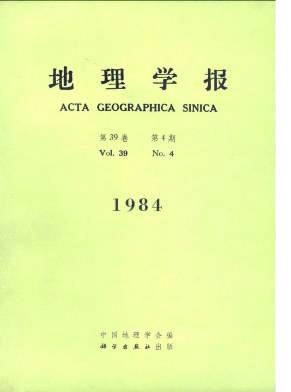Li Shu-tan
Weng Wen-hao (1889-1971), one of the founders of modern geography in China, was a graduate of geology from Lcmvain University in 1912. Geology by profession, he made important contributions to the development of Earth science in China. While Chu Co-ching advanced the modern Chinese geography from the meteorology and climatology approach, Weng’s contributions were mainly in the field of physiog-raphy.In 1928, Weng established the first geographical department in Tsinghua Uni-versity. Together with Chu Co-ching, Chang Gi-yun and Hu Huan-yong etc., Weng organized the Chinese Geographical Society in Nanking in 1934. He was elected the first president of that society and made this Journal published in the same year. This Journal has been existed for 50 years until now mostly as a quarterly periodical. As a government official during the Sino-Japanese war, Weng continued his presidentship from 1938 to 1943. During these difficult years, Weng made timely financial help to the Society. In 1949, he left his country for Hongkong a,nd Paris, but finally re-turned to Beijing in 1951.His contributions to the geographical science of China were mostly done in the 1920s and 1930s and may be summed up as follows:A. Weng was the first Chinese scholar who introduced the A. Wegener’s hy-pothesis of Continental Drift into China. In his article appeared in "Science", 1925, vol. 6, no. 3, he. recommended the theory of isostasy and pointed out the importance of this new concept in the explanation of land and sea distribution and its future sig-nificance.B. In his paper "A Brief Account of Chinese Geological History" (1922, "Na-ture"), Weng discussed the evolution of Chinese landforms. It is an important work in physical geography. Based on the tectonic movements and the Chinese historical data, he gave explanations to the process of relief formation in China, such as the coastal changes, the flooding of the Yellow River and the changes of its lower cou-rses. Finally, he classified Chinese geologic history into eras and periods, named them and their chief rock formation and mineral deposit.C. Weng was the innovator of the Yan-shan Mountain Movement in China. In his paper "The Cenozoic Movement of Eastern China", he indicated the existence ofa mountain movement in Eastern China in the Mesozoic Era. This movement was later than the worldwide Hercynian but earlier than the Himalayan Movement. The Yan-shan Movement took place from the end of Jurassic to Cretaceous and many mo-untains, including the Tsinling, were the result of it. He compared this movement with the Jurasside and Laramide of western North America.D. His another contribution to geography in China was that he advocated the new concept of mountain building. In his paper "The Investigation of Chinese Mo-untain Eanges" appeared in "Science", 1925, vol. 9, no. 1, he criticized the old un-scientific concepts concerning the origin of landforms, such as: the mountains are "dragon ranges" acting solely as divides of rivers, that the Pamir is the origin of all mountain ranges and that most rivers emerge from underground waterways, etc. He was the first to explain the formation of mountain relief as the result of tectonic movements of folding and faulting, of erosion and weathering processes. He classified the mountains in China into eight systems, namely: the Altai, Tian-shan, W. Kunlun, Nanshan, E. Kunlun, E. China Eanges, Transversal, and Himalaya systems. He named five platforms: the Siberian, Mongolian, Tibeta.n, Indian, and E. Asian platforms.E. Weng was also a pioneer researcher in the distribution of earthquakes in China. He read a paper on the "Distribution of Chinese Earthquakes under the In-fluence of Geological Structure" at the International Geological Congress in 1922 in Brussel in which he summed up 16 earthquake zones with their frequency of occur-rence. They are the Fen-wei graben, the Tai-hang folds, the Yan-shan folds, the Shan-dong Huai-ho fracture, the Yanzhou-Anhui flexure (named as the Tan-cheng to Lu-jiang fracture today), the Gansu Helanshan frac
